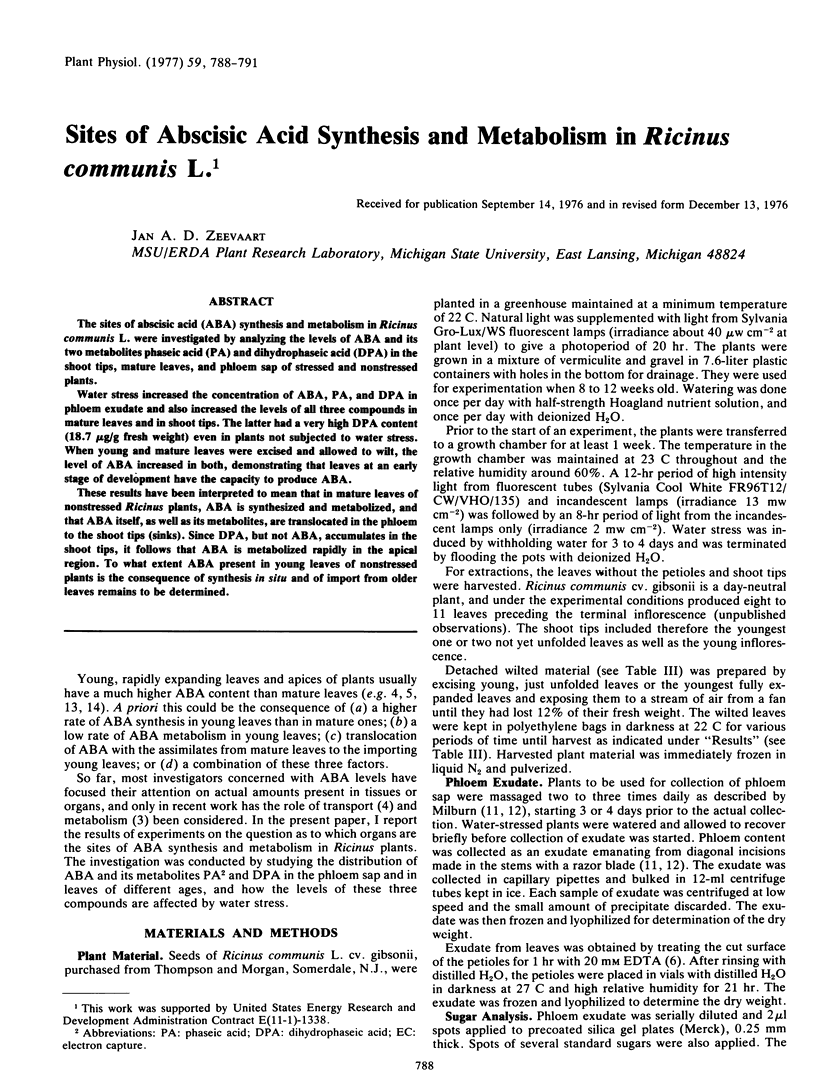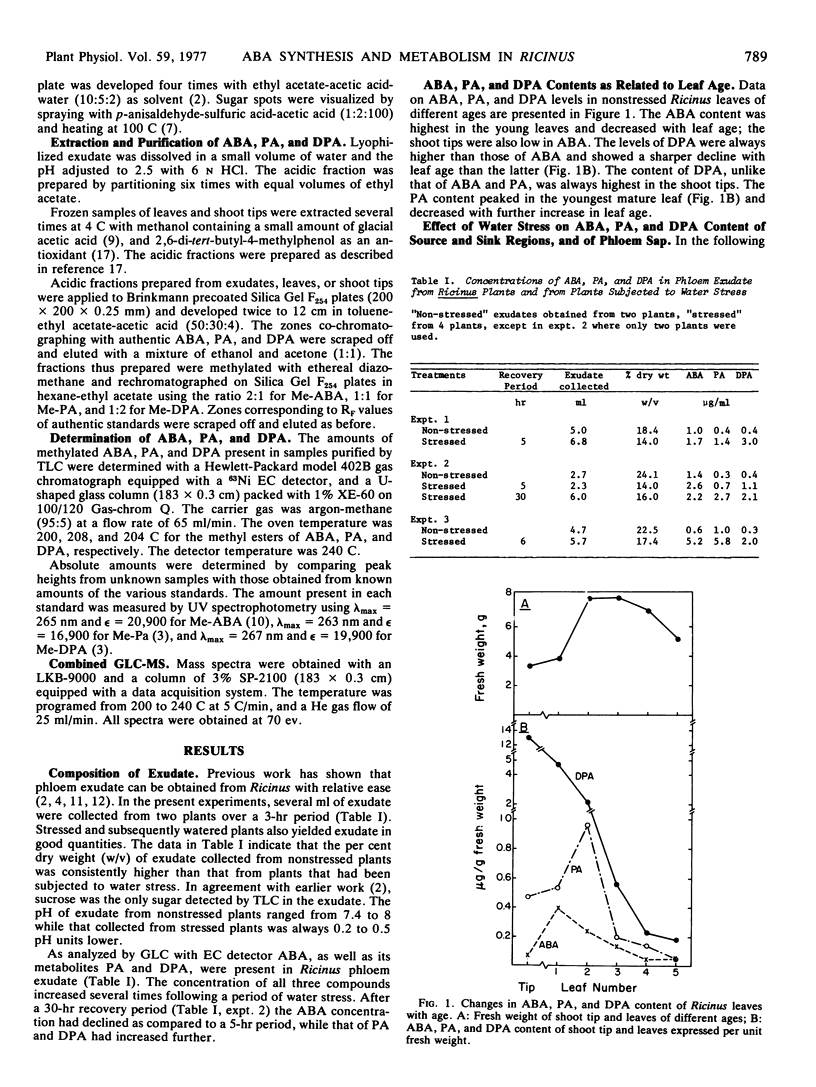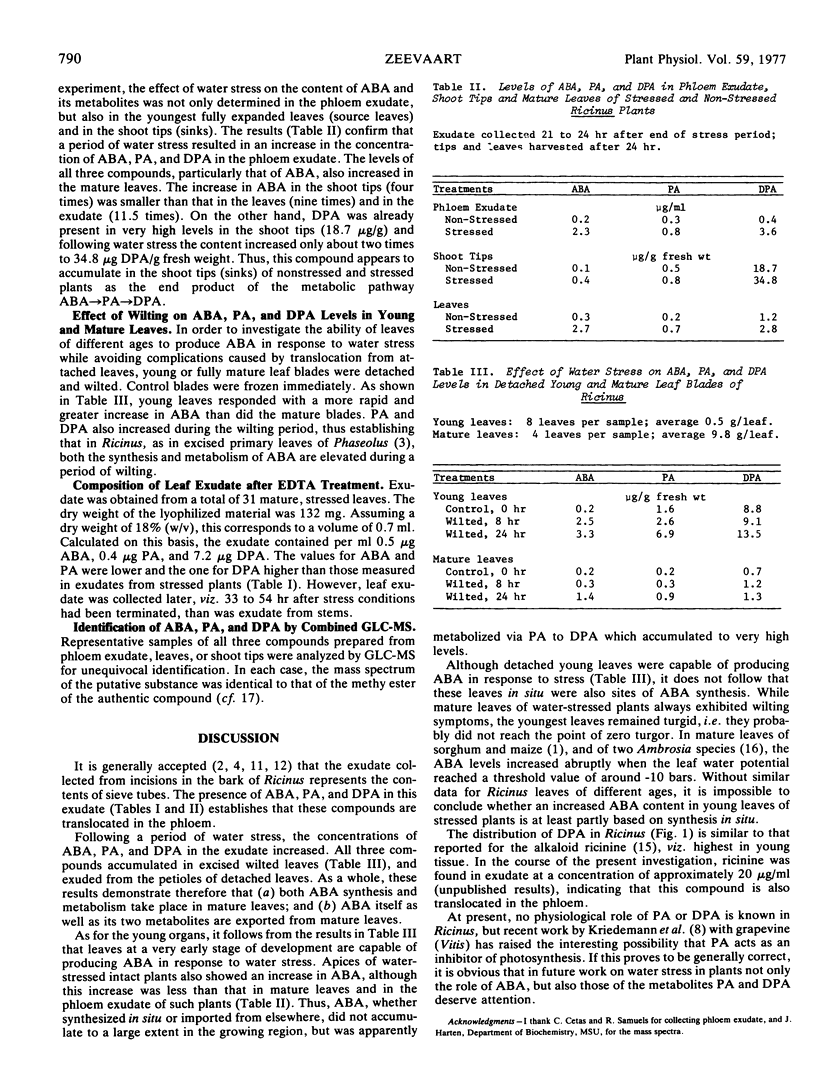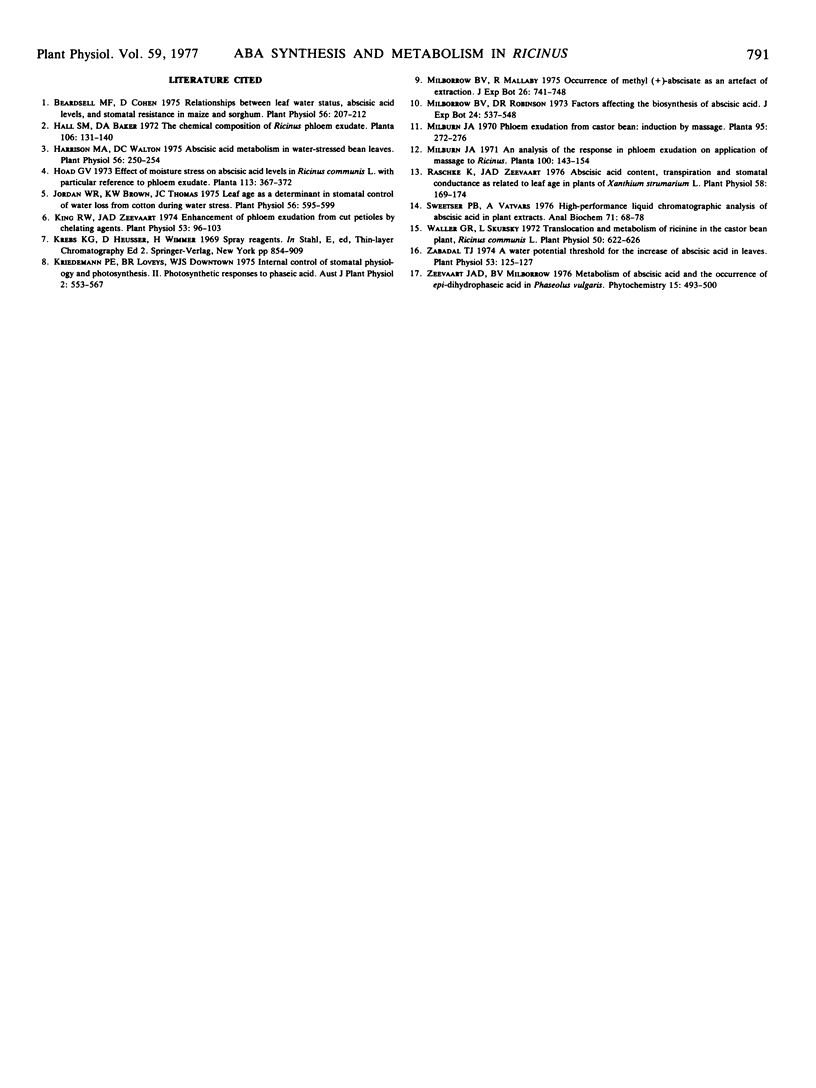Abstract
The sites of abscisic acid (ABA) synthesis and metabolism in Ricinus communis L. were investigated by analyzing the levels of ABA and its two metabolites phaseic acid (PA) and dihydrophaseic acid (DPA) in the shoot tips, mature leaves, and phloem sap of stressed and nonstressed plants.
Water stress increased the concentration of ABA, PA, and DPA in phloem exudate and also increased the levels of all three compounds in mature leaves and in shoot tips. The latter had a very high DPA content (18.7 μg/g fresh weight) even in plants not subjected to water stress. When young and mature leaves were excised and allowed to wilt, the level of ABA increased in both, demonstrating that leaves at an early stage of development have the capacity to produce ABA.
These results have been interpreted to mean that in mature leaves of nonstressed Ricinus plants, ABA is synthesized and metabolized, and that ABA itself, as well as its metabolites, are translocated in the phloem to the shoot tips (sinks). Since DPA, but not ABA, accumulates in the shoot tips, it follows that ABA is metabolized rapidly in the apical region. To what extent ABA present in young leaves of nonstressed plants is the consequence of synthesis in situ and of import from older leaves remains to be determined.
Full text
PDF



Selected References
These references are in PubMed. This may not be the complete list of references from this article.
- Beardsell M. F., Cohen D. Relationships between Leaf Water Status, Abscisic Acid Levels, and Stomatal Resistance in Maize and Sorghum. Plant Physiol. 1975 Aug;56(2):207–212. doi: 10.1104/pp.56.2.207. [DOI] [PMC free article] [PubMed] [Google Scholar]
- Harrison M. A., Walton D. C. Abscisic Acid Metabolism in Water-stressed Bean Leaves. Plant Physiol. 1975 Aug;56(2):250–254. doi: 10.1104/pp.56.2.250. [DOI] [PMC free article] [PubMed] [Google Scholar]
- Jordan W. R., Brown K. W., Thomas J. C. Leaf Age as a Determinant in Stomatal Control of Water Loss from Cotton during Water Stress. Plant Physiol. 1975 Nov;56(5):595–599. doi: 10.1104/pp.56.5.595. [DOI] [PMC free article] [PubMed] [Google Scholar]
- King R. W., Zeevaart J. A. Enhancement of Phloem exudation from cut petioles by chelating agents. Plant Physiol. 1974 Jan;53(1):96–103. doi: 10.1104/pp.53.1.96. [DOI] [PMC free article] [PubMed] [Google Scholar]
- Raschke K., Zeevaart J. A. Abscisic Acid Content, Transpiration, and Stomatal Conductance As Related to Leaf Age in Plants of Xanthium strumarium L. Plant Physiol. 1976 Aug;58(2):169–174. doi: 10.1104/pp.58.2.169. [DOI] [PMC free article] [PubMed] [Google Scholar]
- Sweetser P. B., Vatvars A. High-performance liquid chromatographic analysis of abscisic acid in plant extracts. Anal Biochem. 1976 Mar;71(1):68–78. doi: 10.1016/0003-2697(76)90012-9. [DOI] [PubMed] [Google Scholar]
- Waller G. R., Skursky L. Translocation and Metabolism of Ricinine in the Castor Bean Plant, Ricinus communis L. Plant Physiol. 1972 Nov;50(5):622–626. doi: 10.1104/pp.50.5.622. [DOI] [PMC free article] [PubMed] [Google Scholar]
- Zabadal T. J. A water potential threshold for the increase of abscisic Acid in leaves. Plant Physiol. 1974 Jan;53(1):125–127. doi: 10.1104/pp.53.1.125. [DOI] [PMC free article] [PubMed] [Google Scholar]


